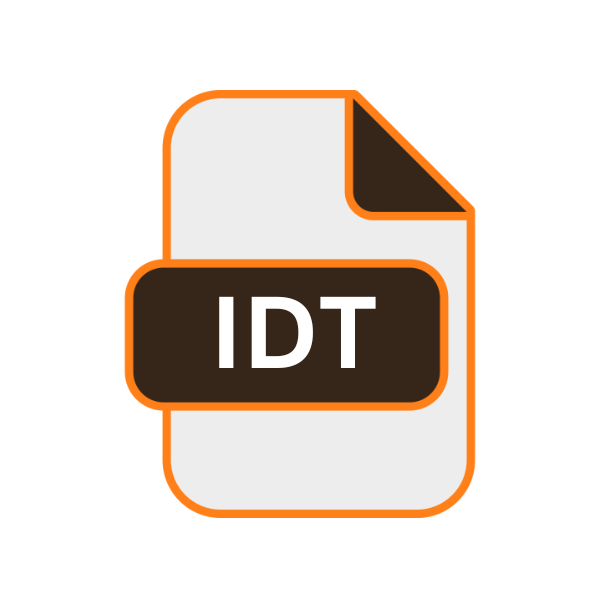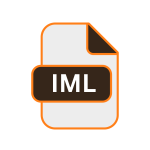.IDL File Extension

Interface Definition Language File
| Developer | Microsoft |
| Popularity | |
| Category | Developer Files |
| Format | .IDL |
| Cross Platform | Update Soon |
What is an IDL file?
The .IDL file extension represents files associated with the Interface Definition Language, a specialized language that defines interfaces between software components.
This language plays a crucial role in software development, particularly when interoperability between different programming languages or systems is required. IDL files are used to describe the interfaces in a platform-independent manner, making it possible for components written in various languages to communicate seamlessly.
These files are most commonly used in distributed computing environments, object-oriented programming, and APIs development.
More Information.
The history of IDL dates back to the early days of distributed computing and object-oriented programming. IDL was initially developed as part of the Common Object Request Broker Architecture (CORBA) by the Object Management Group (OMG) in the early 1990s.
CORBA aimed to enable communication between software components written in different programming languages and running on different platforms. IDL was a critical component of CORBA, providing a language-neutral way to define the interfaces between these components.
The initial purpose of IDL files was to allow developers to define the methods, attributes, and data types that would be exposed by software components.
By using IDL, developers could ensure that their components would be interoperable with other components, regardless of the programming language or platform used to implement them.
This was particularly important in enterprise environments, where heterogeneous systems often needed to work together.
Origin Of This File.
The concept of Interface Definition Language (IDL) arose from the need for a standardized way to describe the interfaces that allow communication between software components.
The primary motivation was to enable interoperability between different programming languages and systems. IDL files serve as a blueprint, specifying how software components should interact without dictating how the components are implemented.
This separation of interface from implementation is a core principle in modern software engineering, promoting modularity and reusability.
File Structure Technical Specification.
The structure of an IDL file is designed to be simple and readable, while also being expressive enough to define complex interfaces. An IDL file typically consists of declarations for data types, methods, and attributes.
These declarations are written in a syntax that resembles C or C++, but the language is designed to be language-agnostic, meaning that it can be used to generate code in various programming languages.
Key elements of an IDL file include:
- Modules: These are used to group related declarations together, similar to namespaces in C++ or Java.
- Interfaces: These define the methods that a software component must implement. An interface may also include attributes, which are similar to properties in object-oriented languages.
- Data Types: IDL supports a range of data types, including basic types like integers and strings, as well as more complex types like arrays, structures, and enumerations.
- Exceptions: IDL allows for the definition of exceptions, which can be used to signal errors or exceptional conditions during the execution of a method.
How to Convert the File?
Here’s a detailed guide on how to handle and convert .IDL files:
1. Using IDL Compilers: IDL compilers are tools that process .IDL files to generate source code in various programming languages. This method is primarily used to convert IDL definitions into executable code.
2. Code Generation Tools: Many development environments and frameworks provide integrated tools or plugins to automatically handle the conversion of .IDL files. These tools generate the necessary code or stubs for specific frameworks.
3. Documentation Generation: To produce documentation from .IDL files, specialized tools can parse the content and generate documentation in formats such as HTML, PDF, or LaTeX.
4. Manual Conversion: When automated tools are not available, manual conversion of .IDL files into other formats may be necessary. This involves extracting and reformatting the content manually.
5. Conversion for Different Middleware/Frameworks: Adapting .IDL files for different middleware or frameworks may require modifications to the IDL definitions or using specific converters provided by the new system.
6. Interfacing with Other Description Languages: Converting IDL files to other interface description languages, such as WSDL for web services, may involve manual mapping or the use of conversion tools due to differences in language constructs.
7. Platform-Specific Considerations: The process of converting .IDL files can vary depending on the platform or development environment in use. Different platforms may require different tools or approaches for handling .IDL file conversion.
Advantages And Disadvantages.
Advantage:
- Language Neutrality: IDL files provide a language-neutral way to define interfaces, making it possible for components written in different languages to interoperate.
- Platform Independence: By defining interfaces in an IDL file, developers can ensure that their components will work across different platforms, promoting reuse and reducing development costs.
- Modularity: IDL encourages modular design by separating interface definitions from implementation, making it easier to maintain and update software components.
- Interoperability: IDL is crucial in distributed systems and middleware technologies, enabling seamless communication between diverse systems.
Disadvantage:
- Complexity: The use of IDL adds a layer of complexity to the development process, as developers must learn and work with an additional language.
- Tool Dependency: The effectiveness of IDL depends on the availability and quality of IDL compilers and other tools, which can vary between platforms.
- Limited Flexibility: While IDL is powerful, it may not support all the features of a particular programming language, leading to limitations in what can be expressed.
How to Open IDL?
Open In Windows
- Text Editors: Notepad++, Sublime Text, and Visual Studio Code are suitable for viewing and editing .IDL files.
- IDEs: Visual Studio provides integrated support for .IDL files, especially useful for COM components.
Open In Linux
- Text Editors: Vim, Emacs, and Gedit can be used to open and edit .IDL files.
- IDEs: Eclipse and IntelliJ IDEA, with appropriate plugins, support working with .IDL files.
Open In MAC
- Text Editors: TextEdit, BBEdit, and Visual Studio Code can open and edit .IDL files.
- IDEs: Xcode can be used for development involving .IDL files, particularly with custom configurations.
Open In Android
- File Managers: Basic file management apps can view .IDL files, though editing might be limited.
- Code Editors: Apps like AIDE or Dcoder allow for code editing, including .IDL files.
Open In IOS
- File Managers: The Files app or other file management apps can open .IDL files.
- Text Editors: Apps like Textastic or Koder provide editing capabilities for .IDL files.
Open in Others
- Universal Text Editors: Many platforms offer text editors that can open .IDL files, such as online editors or cross-platform tools.
- Development Tools: Multi-platform development tools with support for .IDL files may be available for various environments.













